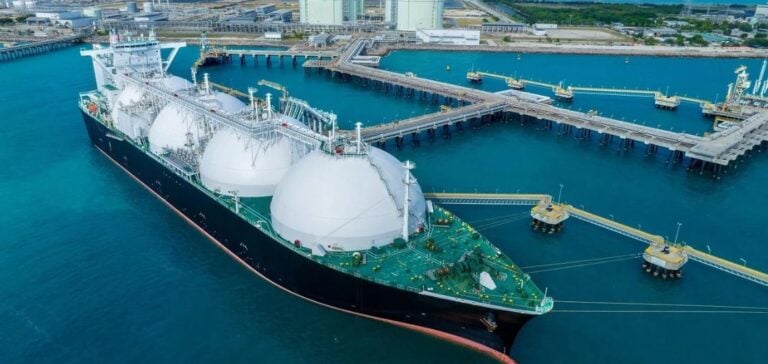Saudi Aramco, the world’s leading oil producer, is embarking on a diversification strategy by increasing its stake in the liquefied natural gas (LNG) sector.
This move comes against a backdrop of strong growth in global demand for LNG, particularly in Asia, Europe and the Americas.
By acquiring a 49% stake in MidOcean Energy, Aramco is strengthening its position in a market that is set to expand significantly in the coming years, with forecasts of a 50% increase by 2030.
This move is designed to meet growing energy needs while aligning with energy transition trends.
Aramco’s investment in MidOcean Energy and its support for the acquisition of a stake in Peru LNG illustrate a commitment to moving towards more sustainable energy resources.
LNG is seen as a cleaner alternative to traditional fossil fuels, enabling Aramco to diversify its portfolio while meeting growing environmental demands.
By 2023, Aramco had already acquired a minority stake in MidOcean for $500 million, and this latest increase in shareholding demonstrates its commitment to developing its assets in the LNG sector.
Peru LNG’s strategic role in MidOcean’s portfolio
Peru LNG, located in Pampa Melchorita, represents a key project for MidOcean, with a production capacity of 4.45 million tonnes per year.
The site is strategically positioned to supply Asian and North American markets, making it a valuable asset in Aramco’s LNG portfolio.
By increasing its stake to 35%, MidOcean, backed by Aramco, is positioning itself as a major LNG player in Latin America.
This consolidation of shares between MidOcean and Hunt Oil, which maintains its role as operator, optimizes operational efficiency and strengthens synergies between the partners.
MidOcean’s acquisition of an additional 15% stake in Peru LNG, financed by Aramco, underlines the importance of this project in Aramco’s overall strategy.
By aligning the interests of the main partners, this transaction aims to maximize production and guarantee stable supply to international markets.
Collaboration between Aramco and its partners, such as EIG Global Energy Partners and Mitsubishi Corporation, is essential to the success of this initiative.
Geopolitical Challenges and Regional Markets
Aramco’s expansion in the LNG sector raises significant geopolitical issues.
Aramco’s increased control over Peru LNG could influence the dynamics of LNG exports in South America, particularly as regards trade relations with countries such as Brazil, which is diversifying its supplies.
A greater shareholding by Aramco could also modify negotiation strategies in the LNG market, by strengthening the company’s position in commercial discussions.
The risks associated with the global LNG supply chain also need to be taken into account.
Price fluctuations, geopolitical tensions and changes in global energy demand can impact the profitability of Aramco’s new assets.
The company will need to navigate these challenges to ensure the success of its investments in MidOcean and Peru LNG.
Proactive risk management will be crucial to maintaining Aramco’s competitiveness in the global LNG market.
Related issues and risks
Aramco’s increasing participation in LNG projects abroad exposes the company to market concentration risks.
Fluctuations in world LNG prices, influenced by economic and geopolitical factors, can affect the profitability of its investments.
Aramco must therefore adopt a strategic approach to managing these risks while maximizing the opportunities offered by the LNG market.
Managing partnerships is also a major challenge for Aramco.
Working with entities such as Hunt Oil and Marubeni, the company must ensure that the interests of all partners are aligned.
Effective communication and strong relationship management will be essential to ensure project success in a competitive environment.
Aramco’s ability to navigate these challenges will largely determine the outcome of its investments in the LNG sector.
Aramco’s increased stake in MidOcean and its support for the acquisition of a stake in Peru LNG represent an important step in the Saudi oil giant’s diversification strategy.
While Peru LNG is a strategic asset, Argentina and other players continue to play important roles in South America’s dynamic LNG landscape.
Aramco will need to navigate geopolitical issues, market risks and partnership management to maximize the potential of this LNG expansion.





















